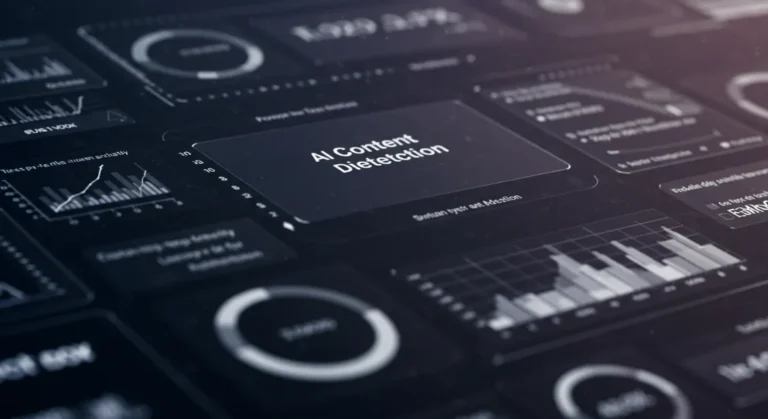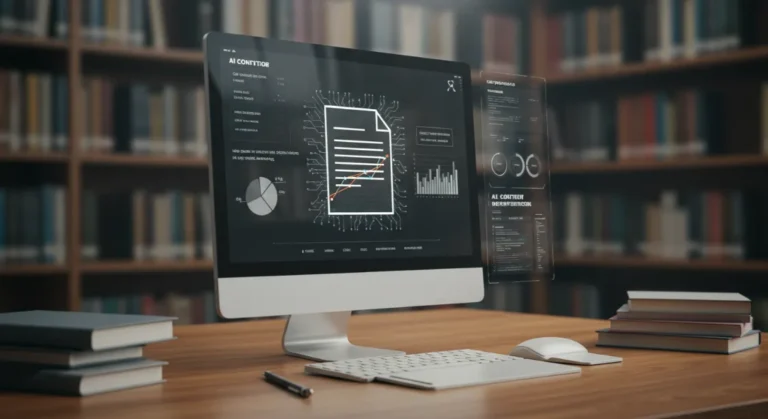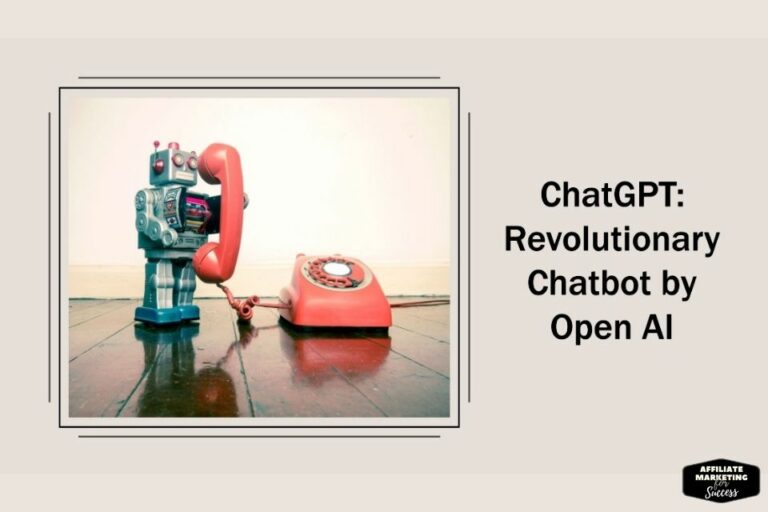Turnitin AI Detection Accuracy: 98% Reliable? [2024]
Plagiarism checking is a vital aspect of maintaining academic integrity. With the rise of advanced technology, ensuring the accuracy of detection tools has become paramount. Turnitin, a leading provider in this field, utilizes artificial intelligence (AI) to enhance its detection capabilities. But how accurate is this AI detection? Let’s delve deeper and explore the intricacies of Turnitin’s AI writing detection and its role in preserving academic integrity.
Key Takeaways:
- Turnitin employs advanced algorithms and text analysis powered by artificial intelligence to detect potential instances of AI-generated text.
- The AI writing detection model is a reliable tool for educators, but it should not be the sole basis for taking adverse actions against students.
- Turnitin’s AI writing detection capabilities are integrated into existing systems, making it easily accessible for educators through learning management systems.
- AI writing detection serves as a crucial backstop solution to maintain confidence in students’ work and uphold academic standards.
- Accuracy is a continuous focus for Turnitin, and the company is committed to improving the tool’s precision and minimizing false positives.
What is AI writing detection?

AI writing detection is a technology that utilizes artificial intelligence and machine learning to analyze and understand text generated by generative AI tools. With the rapid advancement of artificial intelligence, content creation has become more sophisticated, leading to concerns about academic integrity. AI writing detection tools play a crucial role in helping educators differentiate between original writing and text that may have been produced by a generative AI tool.
Through the use of advanced algorithms and text analysis, AI writing detection can identify patterns and characteristics unique to AI-generated content. This allows educators to gain insights into whether a student’s work has been influenced or completely produced by AI. By implementing AI writing detection, educational institutions can ensure the authenticity and originality of academic work, thereby upholding the principles of academic integrity.
AI writing detection tools help educators distinguish between original writing and text that may have been prepared by a generative AI tool.
How does AI writing detection work?
AI writing detection works by employing deep learning architectures, such as transformer models, to analyze the text submitted by students. These models are designed to identify statistical patterns and language nuances that are indicative of AI-generated writing. By comparing the submitted text with known language models, like GPT-3 or GPT-4, AI writing detection tools can provide educators with valuable insights into the presence of AI-generated content.
The process of AI writing detection involves analyzing the text on a granular level, examining sentence structures, vocabulary choices, and overall coherence. By leveraging the power of artificial intelligence and machine learning, AI writing detection can identify instances where AI tools have been used to generate or assist in writing academic papers. This technology provides educators with a powerful investigative tool to ensure the integrity of academic work.
Why is AI writing detection important?
AI writing detection is of paramount importance in today’s educational landscape due to the increasing use of generative AI tools by students. With the availability and accessibility of AI writing technology, many institutions struggle to prohibit its use entirely. Educators hold varying views on the appropriateness of AI writing tools, making it necessary to implement effective detection measures.
- AI writing detection helps ensure academic integrity by identifying instances where AI tools have been used to generate or assist in writing.
- It provides educators with the means to distinguish between original writing and AI-generated content.
- By preserving the integrity of academic work, AI writing detection maintains the standards and authenticity of student achievements.
The integration of AI writing detection into educational systems empowers educators to make informed decisions, fostering an environment that promotes originality and upholds academic principles.
Why is AI Writing Detection Important?
AI writing detection plays a crucial role in maintaining academic integrity in today’s educational landscape. With the increasing use of generative AI tools by students, institutions are faced with the challenge of addressing the appropriateness of such tools. AI writing detection serves as a backstop solution to ensure confidence in students’ work and uphold the principles of academic integrity.
Generative AI tools have become more prevalent, and many institutions struggle to prohibit their use entirely. Educators have varying views on the ethical implications of AI writing, making it necessary to have a mechanism in place to detect AI-generated text. By implementing AI writing detection, institutions can identify instances where students have used AI tools to produce their work, allowing for appropriate evaluation and conversation about the authenticity of academic contributions.
Educational institutions have a responsibility to uphold academic standards and promote originality. AI writing detection provides an additional layer of scrutiny to identify potential instances of AI-generated text, supporting educators in their efforts to prevent plagiarism and ensure the integrity of academic work. By integrating AI writing detection into existing systems, institutions can equip educators with the necessary tools to evaluate student submissions and provide feedback that encourages originality in writing.
| Benefit | Description |
|---|---|
| Preserving Academic Integrity | AI writing detection helps maintain the authenticity of academic work and ensures that students are producing original content. |
| Identifying AI-Generated Text | The tool can detect instances where generative AI tools have been used to create or enhance written submissions. |
| Preventing Plagiarism | By detecting AI-generated text, institutions can take proactive measures to prevent plagiarism and maintain the trustworthiness of the educational system. |
Why is AI Writing Detection Important?
AI writing detection is essential because it helps educational institutions address the growing use of generative AI tools and their impact on academic integrity. By implementing AI writing detection measures, institutions can preserve the authenticity of academic work, identify instances of AI-generated text, and prevent plagiarism. This ensures that students’ contributions are original and upholds the standards of academic excellence.
How does AI writing detection work?

When it comes to AI writing detection, Turnitin utilizes a deep learning architecture known as the transformer model. This powerful framework allows Turnitin to analyze submitted documents and identify statistical patterns associated with AI-generated writing. By leveraging language modeling and data analysis, Turnitin’s AI writing detection tool can detect content originating from specific language models, such as GPT-3 and GPT-4. This advanced technology allows educators to gain insights into the presence of AI-generated text within student submissions, facilitating the preservation of academic integrity.
Through the deep learning architecture of the transformer model, Turnitin’s AI writing detection tool is able to understand and distinguish between original writing and text created by generative AI tools. By examining statistical patterns unique to AI-generated content, Turnitin can provide educators with a comprehensive analysis of the authenticity and originality of student work. This empowers educators to make informed decisions regarding academic integrity and ensures that students are held accountable for their own original contributions.
Statistical Patterns and Large Language Models
One of the key components in Turnitin’s AI writing detection process is the identification of statistical patterns. These patterns serve as indicators of AI-generated text, enabling educators to differentiate between work created by students and content produced by generative AI tools. By analyzing and comparing language patterns, Turnitin’s AI writing detection tool helps educators identify potential instances of academic misconduct and maintain the integrity of the educational landscape.
| Advantages | Challenges |
|---|---|
| Accurate identification of AI-generated text | Possible false positives |
| Enhanced academic integrity | Constantly evolving AI technology |
| Support for educators in evaluating student submissions | Adapting to new language models |
Table: Advantages and Challenges of AI Writing Detection
While Turnitin’s AI writing detection capabilities offer numerous advantages in maintaining academic integrity, there are also challenges to consider. The potential for false positives exists, meaning that the tool may incorrectly identify AI-generated text where it does not exist. Additionally, the evolving nature of AI technology requires ongoing adaptation and updates to ensure the detection tool remains effective in identifying new language models. Despite these challenges, Turnitin is committed to continuous improvement and refining its AI writing detection capabilities to meet the evolving needs of educators and students.
How accurate is AI writing detection?
AI writing detection has made significant advancements in accurately identifying AI-generated text. However, it is important to understand that while AI writing detection is designed to provide reliable guidance, it is not an absolute proof or disproof of AI writing. The tool may have a low false positive rate, but false positives can still occur. Therefore, it is crucial to use AI writing detection as an investigative tool in combination with other supporting factors when investigating potential academic misconduct.
False positives can occur when the AI writing detection tool mistakenly identifies text as generated by AI when it was actually written by a human. Educators should be aware of this possibility and approach the results with caution. It is essential to consider other contextual factors, such as the student’s writing style, previous work, and the overall content of the submission, when evaluating the presence of AI-generated text.
“AI writing detection is an invaluable tool for educators, but it should never be the sole basis for adverse actions against a student. It serves as a starting point for further investigation and conversation with the student, allowing educators to gather more evidence and make well-informed decisions.”
By using AI writing detection as an investigative tool, educators can have more informed discussions with students suspected of using AI writing tools. It provides an opportunity to engage in educational conversations about academic integrity and the appropriate use of AI technology. Remember, the ultimate goal is to foster an environment of trust, where students understand the importance of originality and academic honesty.
| Advantages of AI Writing Detection | Considerations when using AI Writing Detection |
|---|---|
|
|
How can institutions introduce AI writing detection to students and faculty members?

When it comes to introducing AI writing detection to students and faculty members, transparency and communication are key. It is crucial for institutions to clearly communicate the impact of generative AI tools to educators and students alike. By explaining how an AI writing detection tool will be adopted and utilized, institutions can prevent confusion and ensure a smooth integration process.
Educators and students should be educated about the capabilities of AI and the importance of preserving academic integrity. This can be done through workshops, training programs, or informational sessions. By providing a comprehensive understanding of AI writing detection, institutions can help students and faculty members recognize the value and significance of this technology in maintaining academic standards.
In addition, institutions should foster an environment of openness and trust. By encouraging students and faculty members to have open discussions about AI writing detection, concerns and questions can be addressed effectively. This creates an opportunity for collaboration and learning, ultimately leading to a better understanding of the role AI plays in academic writing.
Turnitin’s AI Writing Detection Capabilities
Turnitin’s AI writing detection capabilities play a vital role in supporting educators in maintaining academic integrity and ensuring the authenticity of students’ academic work. By utilizing advanced AI technology, Turnitin helps educators identify the use of AI writing tools and distinguish between original writing and text generated by generative AI models.
With Turnitin’s AI writing detection capabilities, educators have the ability to analyze and review the authenticity of academic work with a confidence level of 98%. This empowers educators to provide accurate feedback and guidance to students, promoting originality and preventing plagiarism.
By integrating AI writing detection into existing Turnitin products and solutions, Turnitin ensures that educators have easy access to this powerful tool. The seamless integration allows educators to efficiently leverage AI technology to evaluate student submissions and make informed decisions regarding academic integrity.
| Benefit of Turnitin’s AI Writing Detection Capabilities | Relevance |
|---|---|
| Ensures academic integrity | Turnitin’s AI writing detection capabilities help identify potential instances of AI-generated text, ensuring that students’ work reflects their original ideas and efforts. |
| Promotes authenticity | The AI writing detection tool aids educators in verifying the authenticity of academic work, providing a reliable means of determining if text has been generated by AI tools. |
| Saves time and effort | By automating the detection of AI-generated text, Turnitin’s AI writing detection capabilities streamline the evaluation process, allowing educators to focus on providing valuable feedback and guidance. |
Turnitin’s AI writing detection capabilities are a valuable resource for educators in upholding academic standards and fostering a culture of originality and authenticity in academic work.
Enhancing academic integrity with Turnitin AI detection

Turnitin’s AI detection plays a crucial role in enhancing academic integrity by detecting potential instances of AI-generated text. With the rise of advanced AI writing tools, plagiarism prevention has become more challenging for educators. However, Turnitin’s AI detection tool provides a reliable solution to identify and address this issue effectively.
By utilizing Turnitin’s AI detection capabilities, educators can evaluate student submissions and provide valuable feedback. This helps promote originality in academic writing and ensures that students take ownership of their work. The AI detection tool acts as an educational tool, enabling students to learn and understand the importance of academic integrity.
Benefits of Turnitin AI detection:
- Plagiarism prevention: Turnitin’s AI detection tool helps educators identify instances of AI-generated text, preventing students from submitting work that lacks originality.
- Educational guidance: The AI detection tool provides educators with insights and information to guide meaningful conversations with students about the importance of academic integrity.
- Efficient feedback: By detecting potential instances of AI-generated text, educators can provide targeted feedback to students, fostering their understanding of proper citation and original writing.
Turnitin’s commitment to accuracy and continuous improvement ensures that educators can rely on the AI detection tool to enhance academic integrity. As the technology evolves, Turnitin remains dedicated to refining its detection capabilities and staying ahead of emerging AI trends. By leveraging Turnitin’s AI detection, educators can foster a culture of authenticity and uphold academic standards within their institutions.
| Benefits of Turnitin AI detection | |
|---|---|
| Plagiarism prevention | Ensures originality in student submissions |
| Educational guidance | Facilitates conversations about academic integrity |
| Efficient feedback | Enables targeted feedback to students for improvement |
Turnitin’s Commitment to Accuracy and Improvement
Turnitin recognizes the importance of accuracy in AI detection and is dedicated to continuously improving its capabilities. As an industry leader in academic integrity, Turnitin strives to provide educators with reliable and accurate tools for identifying AI-generated text. By focusing on minimizing false positives and enhancing detection accuracy, Turnitin aims to support educators in upholding academic standards and promoting originality.
To ensure the highest level of accuracy, Turnitin leverages advanced algorithms and state-of-the-art technologies. The company regularly updates its AI writing detection model to adapt to evolving AI language models and statistical patterns. By staying ahead of emerging AI technology, Turnitin ensures that its detection capabilities remain effective in identifying content prepared by generative AI tools.
“We understand the importance of accurate AI writing detection in maintaining academic integrity. Our commitment to continuous improvement drives us to refine our algorithms and stay up to date with the latest advancements in AI technology. We are dedicated to equipping educators with reliable tools to promote originality and uphold academic standards.” – Turnitin spokesperson
Continuous Monitoring and Feedback
Turnitin actively monitors the effectiveness of its AI writing detection capabilities by gathering feedback from educators and users. This feedback plays a crucial role in identifying areas for improvement and driving innovation. By actively engaging with the educational community, Turnitin ensures that its AI detection accuracy aligns with the needs and expectations of educators.
In addition to continuous monitoring, Turnitin conducts rigorous testing and quality assurance measures to verify the accuracy of its AI writing detection capabilities. Through iterative development processes, the company works to enhance the reliability and precision of its detection algorithms. Turnitin remains committed to delivering accurate and dependable AI writing detection solutions to support educators in their efforts to maintain academic integrity.
| Key Points | Benefits |
|---|---|
| Continuous monitoring and feedback | Ensures alignment with educators’ needs and expectations |
| Rigorous testing and quality assurance | Enhances reliability and precision of detection capabilities |
| Commitment to improvement | Provides educators with the most accurate AI writing detection tools |
The future of AI writing detection

The field of AI writing detection is constantly evolving, driven by advancements in technology. As AI models become more sophisticated, it is essential for detection tools to adapt and keep up with emerging trends. Turnitin is at the forefront of this evolution, actively working on expanding its AI writing detection capabilities to ensure continued accuracy and effectiveness.
One area of focus for Turnitin is the detection of content from various AI language models. With the proliferation of different language models, it is crucial for detection tools to be able to identify AI-generated text from a wide range of sources. By adapting its algorithms and models, Turnitin aims to provide educators with comprehensive detection solutions that can identify text from the latest AI language models.
Table: Advancements in AI Writing Detection
| Advancement | Description |
|---|---|
| Improved Accuracy | Enhancements in AI algorithms and deep learning architectures lead to more accurate detection of AI-generated text. |
| Expanded Language Model Coverage | Detection tools are being developed to identify content from a wide range of AI language models, ensuring comprehensive coverage. |
| Real-Time Detection | Advancements in AI technology allow for real-time detection of AI-generated text, providing immediate feedback to educators. |
| Enhanced Interpretation | New techniques and algorithms are being developed to better interpret and analyze AI-generated text, allowing for more nuanced detection. |
Another important area of advancement in AI writing detection is the improvement of interpretation and analysis techniques. As AI-generated text becomes more sophisticated, it is crucial for detection tools to be able to interpret and analyze it effectively. By developing new techniques and algorithms, Turnitin aims to enhance the interpretation of AI-generated text, allowing for more nuanced detection and analysis.
In conclusion, the future of AI writing detection is promising. With advancements in technology and a commitment to continuous improvement, Turnitin is well-positioned to provide educators with effective detection solutions. By expanding coverage, improving accuracy, and enhancing interpretation, Turnitin aims to stay ahead of evolving AI technology and help preserve academic integrity.
Conclusion
Turnitin’s AI writing detection capabilities offer a valuable tool for educators seeking to enhance academic integrity in their institutions. While the tool is not infallible, it provides valuable insights and guidance in identifying potential instances of AI-generated text. By leveraging advanced algorithms and text analysis, Turnitin’s AI detection contributes to the preservation of academic standards and the promotion of originality.
It is important to note that Turnitin’s AI writing detection should not be the sole basis for adverse actions against a student. Educators should use it as an investigative tool in combination with other supporting factors when investigating academic misconduct. False positives can occur, and it is essential to consider additional evidence and engage in conversations with students to ensure fairness.
Turnitin is committed to continuous improvement, recognizing the importance of accuracy in AI writing detection. Efforts are being made to minimize false positives and adapt the tool to detect content from various AI language models. With a focus on staying ahead of emerging AI technology, Turnitin aims to provide educators with effective detection solutions to maintain the integrity of academic work.
FAQ
What is AI writing detection?
AI writing detection uses artificial intelligence and machine learning technologies to analyze and understand text produced by generative AI tools. It helps educators distinguish between original writing and text that may have been prepared by a generative AI tool.
Why is AI writing detection important?
AI writing detection is important because generative AI tools are increasingly being used by students, raising concerns about academic integrity. It serves as a backstop solution to ensure confidence in students’ work and preserve academic integrity.
How does AI writing detection work?
When a student submits a paper to Turnitin, the document is analyzed using a deep-learning architecture called the transformer model. Turnitin leverages language modeling to identify statistical patterns of AI-generated writing.
How accurate is AI writing detection?
AI writing detection is designed to provide reliable guidance for conversations with students, but it is not an absolute proof or disproof of AI writing. The tool may have a low false positive rate, but false positives can occur. It should be used in combination with other supporting factors when investigating academic misconduct.
How can institutions introduce AI writing detection to students and faculty members?
Institutions should communicate the impact of generative AI to educators and students. Transparency about how an AI writing detection tool will be adopted is crucial to prevent confusion. Educators and students should be educated about the capabilities of AI and the importance of preserving academic integrity.
What are Turnitin’s AI writing detection capabilities?
Turnitin’s AI writing detection capabilities have been activated to identify the use of AI writing tools, such as ChatGPT, with 98% confidence. These capabilities help educators analyze and review the authenticity of academic work.
How does Turnitin’s AI detection enhance academic integrity?
Turnitin’s AI detection plays a crucial role in enhancing academic integrity by detecting potential instances of AI-generated text. Educators can use the AI writing detection tool to evaluate student submissions and provide feedback, preventing plagiarism and promoting originality in academic writing.
What is Turnitin’s commitment to accuracy and improvement?
Turnitin is committed to improving the accuracy of its AI detection capabilities. The company recognizes the importance of accurate detection and aims to minimize false positives. Continuous improvement efforts ensure that educators can rely on the accuracy of the AI writing detection tool.
What is the future of AI writing detection?
As AI writing technology continues to evolve, Turnitin is actively working on expanding its AI writing detection capabilities. The company is focused on adapting the tool to detect content from various AI language models. Turnitin aims to stay ahead of emerging AI technology and provide educators with effective detection solutions.
Source Links
- https://help.turnitin.com/ai-writing-detection.htm
- https://www.turnitin.com/press/turnitin-turns-on-ai-writing-detection-capabilities-for-educators-and-institutions-southeast-asia
- https://www.turnitin.com/blog/ai-writing-detection-what-academic-leaders-need-to-know-as-technology-matures
I’m Alexios Papaioannou, an experienced affiliate marketer and content creator. With a decade of expertise, I excel in crafting engaging blog posts to boost your brand. My love for running fuels my creativity. Let’s create exceptional content together!







